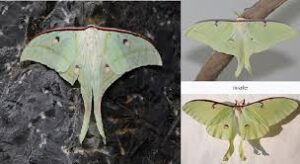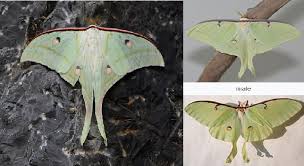Beijing Cuisine and Royal Dishes: A Culinary Journey Through the Heart of China

Beijing, the capital of China, is not only known for its rich history, iconic architecture, and vibrant culture, but also for its exceptional cuisine. As one of the oldest cities in the world, Beijing’s food culture is deeply rooted in centuries of royal tradition, imperial influence, and regional variety. Beijing cuisine (also known as Jing cuisine) has evolved over thousands of years, influenced by the various dynasties that ruled the city and the capital’s position as the heart of Chinese politics, culture, and society. Within this culinary landscape, there are dishes that have been specially reserved for emperors and royal families, becoming symbols of luxury, prestige, and culinary mastery.
In this article, we will explore the world of Beijing cuisine, focusing on the royal dishes that have shaped the city’s culinary legacy. From Peking Duck, one of China’s most famous dishes, to the elaborate imperial feasts that were served in the Forbidden City, we will delve into the historical, cultural, and culinary significance of these royal foods and explore how they continue to influence modern Beijing cuisine.
A Historical Overview of Beijing Cuisine
Beijing’s culinary history dates back to the Yuan Dynasty (1271-1368), when the city became the capital of the Mongol Empire. With the establishment of the capital in Beijing, a fusion of Mongolian, Central Asian, and Chinese influences began to shape the city’s food culture. This blending of flavors and techniques marked the early stages of Beijing cuisine, which would evolve over time under the influence of successive dynasties.
The Ming (1368-1644) and Qing (1644-1912) dynasties played pivotal roles in defining the cuisine of Beijing, especially when it came to the imperial kitchen. During these periods, the emperors of China created elaborate feasts to showcase their wealth, power, and cultural sophistication. The foods prepared for the royal court were not only a symbol of luxury but also a way of demonstrating the emperor’s ability to control and cultivate the most exquisite ingredients and cooking methods.
Beijing cuisine, as we know it today, is the result of centuries of development and refinement. The city’s position as a political and cultural hub attracted merchants, chefs, and culinary innovators from across the country, leading to the emergence of a distinctive culinary style that combines savory, sweet, sour, and salty flavors with a focus on roasted, braised, and steamed dishes. The use of fresh, local ingredients, along with delicate seasonings, continues to be a hallmark of Beijing cuisine.
Royal Cuisine in Beijing: An Exclusive Culinary Tradition
Royal cuisine in Beijing was created to satisfy the extravagant tastes of the emperors and their courts. During the Qing Dynasty, the imperial kitchen employed skilled chefs who were tasked with preparing highly elaborate and extravagant meals that were often served during major state banquets, festivals, or royal ceremonies. These dishes were designed to not only tantalize the taste buds but also to symbolize the emperor’s power and wealth.
Imperial dishes were characterized by their use of high-quality ingredients, meticulous preparation, and creative presentation. Ingredients were sourced from all over China and beyond, ensuring that only the finest foods made their way into the royal kitchens. This focus on luxury and opulence meant that certain dishes were only available to the emperor and his court, making them a symbol of power and exclusivity.
Among the most famous and enduring symbols of Beijing’s royal cuisine are dishes that have become iconic and synonymous with the city’s food culture. Some of the most notable royal dishes, which continue to be served in high-end restaurants and enjoyed by locals and visitors alike, include Peking Duck, Imperial Hotpot, and Eight-Treasure Rice.
Peking Duck: The Crown Jewel of Beijing Cuisine
Without a doubt, the most famous dish in Beijing cuisine is Peking Duck (北京烤鸭), a dish that has become a symbol of the city itself. Known for its crispy skin, tender meat, and delicate flavor, Peking Duck was originally created for the imperial court during the Yuan Dynasty. The dish was perfected over centuries, and by the Ming Dynasty, it had become a staple of royal banquets and feasts.
Peking Duck is traditionally prepared by air-drying the duck, coating it with a special glaze made from honey and maltose, and roasting it in an oven until the skin becomes golden and crispy. The duck is then carved tableside, with the crispy skin served alongside thin pancakes, sliced cucumber, and hoisin sauce. The dish is revered for its combination of textures—the crispy skin, tender meat, and the balance of savory and slightly sweet flavors.
The preparation of Peking Duck requires great skill and precision, making it a dish that was historically reserved for the emperor and his court. Today, however, Peking Duck has become a beloved dish not only in Beijing but also around the world, with many restaurants dedicated to its preparation.
Peking Duck’s Royal Origins
The origin of Peking Duck can be traced back to the imperial kitchens during the Yuan Dynasty, but it became most associated with the Qing Dynasty. The dish was considered a symbol of the emperor’s ability to command the finest ingredients and cooking techniques. The method of preparing the duck involved the use of specialized ovens and cooking techniques that were only available to the imperial chefs.
In addition to its culinary expertise, Peking Duck was also an important part of royal banquets. During the Qing Dynasty, elaborate banquets were held to celebrate important events, and Peking Duck was often the centerpiece of these feasts. Its delicate flavors and luxurious presentation made it a fitting dish for the emperor’s table.
Imperial Hotpot: A Symbol of Elegance and Luxury
Another famous royal dish from Beijing is Imperial Hotpot (宫廷火锅). Hotpot is a popular dish in many parts of China, but the imperial version of this dish was far more elaborate and sophisticated than its regional counterparts. The Imperial Hotpot was traditionally prepared with a wide array of exotic ingredients, including rare herbs, mushrooms, and meats, and was often enjoyed by the emperor and his court during banquets and state occasions.
The hotpot was served in a large, ornate pot, often made of silver or gold, and simmered over an open flame. The ingredients were carefully selected to balance flavors and promote health, as it was believed that the emperor’s food should nourish both the body and the soul. The hotpot’s rich, fragrant broth was flavored with a variety of spices, herbs, and medicinal plants, making it a dish fit for royalty.
In modern times, the Imperial Hotpot is still served in high-end restaurants in Beijing, where diners can experience a version of this once-exclusive dish. Though it has evolved to suit contemporary tastes, the essence of the royal hotpot remains, with luxurious ingredients such as bird’s nest, sharks fin, and abalone often included in the broth.
Eight-Treasure Rice: A Sweet Treat for Royalty
One of the most beloved royal desserts in Beijing cuisine is Eight-Treasure Rice (八宝饭), a sweet, sticky rice dish often served at the end of an imperial meal. This dish was traditionally served during important festivals, such as the Chinese New Year, as well as during royal banquets and celebrations. The dish is made from glutinous rice, which is cooked with sugar and then topped with eight different types of ingredients, such as lotus seeds, red dates, candied fruits, walnuts, and ginger.
The number eight is significant in Chinese culture, as it is considered a symbol of good fortune and prosperity. The combination of these eight ingredients creates a harmonious balance of textures and flavors—sweet, savory, crunchy, and soft. Eight-Treasure Rice was originally a dish reserved for the emperor, symbolizing wealth, good luck, and the emperor’s generosity.
Today, Eight-Treasure Rice remains a popular dessert in Beijing and throughout China. While it is no longer reserved for royal consumption, it continues to be enjoyed during important celebrations and is often served as a symbol of good fortune.
Other Royal Dishes of Beijing Cuisine
While Peking Duck, Imperial Hotpot, and Eight-Treasure Rice are some of the most famous royal dishes in Beijing, there are many other dishes that have been part of the city’s culinary legacy for centuries. These include:
- Imperial Braised Chicken: A dish made with chicken, mushrooms, and herbs, braised to perfection and often served in a rich, flavorful sauce.
- Emperor’s Fish Soup: A delicate soup made with fish, herbs, and medicinal ingredients, believed to have health-boosting properties.
- Royal Stewed Lamb: Tender lamb slow-cooked with aromatic spices, often served as part of a royal banquet.
These dishes, though no longer reserved solely for the emperor, continue to embody the grandeur and refinement of Beijing’s culinary traditions.
Conclusion: Beijing Cuisine – A Legacy of Royal Elegance
Beijing cuisine, with its long history of royal influence, offers a fascinating glimpse into the opulence and culinary expertise of China’s imperial past. From the world-renowned Peking Duck to the luxurious Imperial Hotpot and the symbolic Eight-Treasure Rice, the royal dishes of Beijing continue to captivate the palates of food lovers around the world.
These dishes not only showcase the skills of Beijing’s chefs but also reflect the rich cultural heritage of the city. Today, as Beijing embraces both tradition and modernity, the royal culinary traditions remain an integral part of the city’s food culture, offering a taste of the luxury and elegance that once defined the imperial court. Whether enjoyed at a high-end restaurant or prepared at home for a special occasion, Beijing’s royal dishes offer a journey through China’s rich culinary history.
